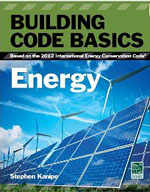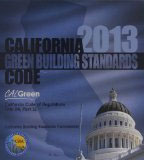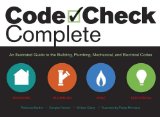Building Codes
Dealing with building codes can be a major hurdle for those who want to build with natural materials, especially if there is anything experimental about the design concept or building technology. I have rassled with this issue many times in my life. I have ignored the local building authorities and either been caught or felt deceptive. I have complied with local authroities and been forced to do things that I considered either of questionable value or in opposition to my intentions. Occasionally I have been glad that the code was there to point out a safe approach to some building problem. So I approach the issue of building codes with very mixed emotions.
Building codes tend to be extremely specific about what materials may be used where and in what way. Little is really left to the discretion of the builder. Sure, design elements can vary, but they all must fit within certain parameters that regulate every aspect of building, from the nature of the foundation, to the size and placement of windows, to what materials may be used to create the shell. The Uniform Building Code and the International Residential Code does provide for the discretion of the inspector to allow different interpretations of the code, if he feels that the intent of the code is met. In reality this is rarely done, because there is a disincentive: anything that doesn't come straight from "the book" could possibly come back to haunt him. His supervisor may not like it, or if there were a failure at some point, somebody might try to hold him liable. This degree of micro-management can easily squelch innovation in building technologies, innovation which is vital to evolving what I would call sustainable architecture.
In 2008 the National Association of Home Builders (NAHB) in conjunction with the International Code Council (ICC) developed a new National Green Building Standard. This has also been approved by the American National Standards Institute (ANSI), which is a first for this organization. This Green Home Building Standard is similar to the LEED process for evaluating and certifying homes, but is probably less costly to perform. It does rely on independent inspections to verify claims that are made. These standards will help home buyers realize just how green the claims might be for any given home they might be considering to purchase.
I would say that this new standard for evaluating the "greeness" of buildings is a giant step in the right direction. Virtually all of the basic criteria for building green that I have been advocating for years at this website have been recognized to some extent. The next step is to begin incorporating these green criteria into the actual codes.
We have reached a critical point in the United States, where there are very few places left without mandatory building codes. We need to express our concerns to those making the decisions through letters, phone calls or attending any meetings that are scheduled around this issue. Our future is at stake.
The books shown below are arranged according to when they were published, with the most recent ones at the top. If you click on one of the images you will be taken to a page at Amazon.com where you can find out more about the book. If you end up buying one of them, greenhomebuilding.com will receive a small commission that will help cover the cost of maintaining this website. Thanks for your patronage.
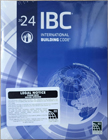



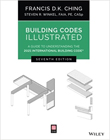
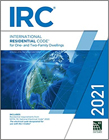
Informative Links
sterlingcodifiers.com the actual building codes for many jurisdictions throughout the United States.
dcat.net The Development Center for Appropriate Technology fosters sustainable building practices by getting them into building codes!
dcat.net lists Strawbale Codes specifically for Texas, California, Colorado, and Arizona.
California Sustainable Healthy Home Waiver a PDF of the initial campaign framework for a Ballot Initiative in California.
taunton.com/finehomebuilding an article by David Eisenburg: Our Myopic Building Codes
green.blogs.nytimes.com a 2012 article about alternative building codes in Moab, Utah.

For Email contact go to About Us
Established in 2001, GreenHomeBuilding.com is primarily a labor of love. Kelly, and the GreenHomeBuilding team of experts, have answered thousands of questions for readers over the years, and we continue to publish up-to-date information about increasingly important sustainable architecture. If you feel moved to assist us in this work, your kind donation would be much appreciated; this can be easily done through our PayPal account:

VISIT OUR OTHER WEBSITES:
[Natural Building Blog] [Earthbag Building] [Dream Green Homes]
Disclaimer Of Liability And Warranty
I specifically disclaim any warranty, either expressed or implied, concerning the information on these pages. Neither I nor any of the advisor/consultants associated with this site will have liability for loss, damage, or injury, resulting from the use of any information found on this, or any other page at this site. Kelly Hart, Hartworks LLC.



























